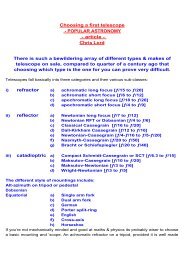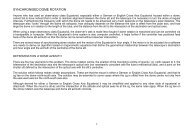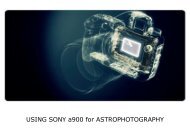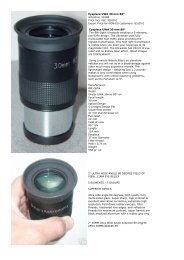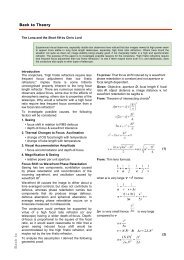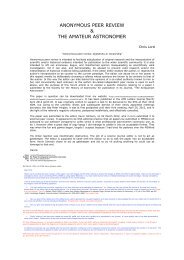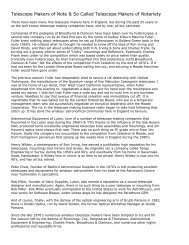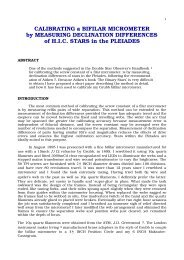Evolution of the Astronomical Eyepiece - Brayebrook Observatory
Evolution of the Astronomical Eyepiece - Brayebrook Observatory
Evolution of the Astronomical Eyepiece - Brayebrook Observatory
You also want an ePaper? Increase the reach of your titles
YUMPU automatically turns print PDFs into web optimized ePapers that Google loves.
EVOLUTION <strong>of</strong> <strong>the</strong> ASTRONOMICAL EYEPIECE<br />
NAGLER I - A 2-1-2-2 design by Al<br />
N a g l e r, having a Sm yth achro m a t i c<br />
field flattener to widen <strong>the</strong> geometric<br />
apparent field from 52˚ to 82˚. However<br />
rectilinear distortion is 28%. Eye clearance<br />
is 1.2Fe. The Smyth lens enlarges<br />
<strong>the</strong> beam leading to a very bulky eyepiece<br />
in focal lengths greater than<br />
13mm, and raised production costs. It<br />
also suffers markedly from spherical<br />
aberration <strong>of</strong> <strong>the</strong> exit pupil, more so<br />
th an most o<strong>the</strong>r ult ra-w ide a ngle<br />
designs.<br />
NAGLER II - A 2-1-2-1-2 modification<br />
by Al Nagler, sharing <strong>the</strong> same fundamental<br />
design and field, but having<br />
reduced spherical aberration <strong>of</strong> <strong>the</strong> exit<br />
pupil. It is still more noticeable than<br />
<strong>the</strong> military Bertele, and <strong>the</strong> Galoc.<br />
MEADE UWA - A 2-1-2-1-2 design by<br />
Meade, having strong similarities to <strong>the</strong><br />
Nagler II. The apparent field is 84˚ and<br />
eye clearance 1.5Fe.<br />
The number <strong>of</strong> air-glass surfaces and<br />
lens thicknesses l ea d to signi ficant<br />
transmission losses. Axial point images<br />
also tend to be larger th an those<br />
formed by ei<strong>the</strong>r <strong>the</strong> Orthoscopic or<br />
Monocentric.<br />
40



